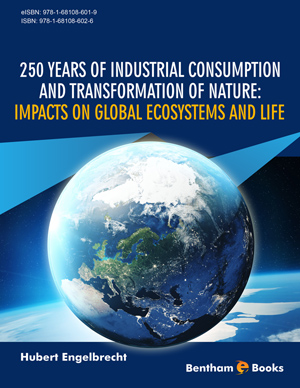Abstract
Humans have converted 75% of global terrestrial biomes into anthomes. 30.1 million km2 wilderness remain. Global tropical forests declined between 1990- 2015 by 10% to 545 Mio ha. The baseline value of the Samples Red Averaged List Index for global plants is 0.86; their main threats are biological resource use, immissions of reactive N, agri- and aquaculture, natural system modifications, residential and commercial development, invasive species and genes, mining and smelting, transportation and service corridors, human intrusions and disturbance, climate change, and pollution. In 58% of land areas, the planetary boundaries of functional and genetic biodiversity are transgressed. Warming has caused 5.7% of vegetated land to shift to warmer and dryer climate zones. 10% of vegetated land is sensitive to warming and 21% of vascular plants are threatened with extinction. Because angiosperms species diversified, adapted, and radiated during the CO2 decline in the Cretaceous, recent CO2 increase will have profound implications, although the capacity of terrestrial flora to sequester carbon has increased in the 20th century. In 2014, global tree cover loss amounted to 18 million ha and decreased its carbon storage capacity. Global flora is threatened by extended wildfire seasons, degradation or loss of habitat zones, modified annual growth phases, and altered heat, moisture, and trace gas concentrations. Attempts have been made to attain genetically engineered crop plants resilient against heat and drought. A short history of protection measures for global flora is given. Due to warming and fertilisation with CO2 and reactive N, boreal and austral floras has begun to sequester more carbon and to colonise deglaciated areas. Aquatic vegetation was impaired by pollutants, heat, harvesting, and intrusion of xenospecies. Experiments have revealed adaptive limits of primary producers to sea water acidification.
Keywords: Adaptive limits, Agriculture, Arctic greening, Biodiversity decline, Carbon sequestration, Climate classes, Extinction, Fertilisation, Forests, Genetic engineering, Habitat degradation, Homogenisation, Immissions, Land take, Nature parks, Planetary boundaries, Primary producers, Technogenic deserts, Warming, Xenospecies.












